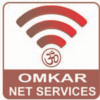1) Broadband –
Broadband is the latest and fastest mode of connecting to the Internet with minimum download speeds of 512 kilobits per second (kbps). The ordinary dial-up connection uses the telephone line to connect to the Internet and has its own inherent disadvantages since the telephone line cannot support high-speeds. On the other hand, Broadband does not depend on the telephone line and is capable of carrying very ‘heavy’ packets on the Internet and at incredible speeds. Hence, with a High-Speed Broadband connection, there is a lot that you can do on the Internet which you can never do using an ordinary dial-up connection; like watching videos, downloading heavy files, downloading songs, voice chat, web-cam, etc.
2) Lease Line –
A leased line is a dedicated data connection with a fixed bandwidth. It enables small, medium, and large businesses to connect to the internet in a secure, reliable, and highly efficient manner, with maximum download capacity, resilience, and uptime.
Types of leased lines
Fibre leased lines: This includes a process of sending light from fibre leased lines to fibre optic cables to establish a symmetric data connection. Only a few leased lines use fibre cables for the entire routing, whereas most leased lines use fibre cables for the majority of the portion. The fibre leased lines offer great speed compared to the other types.
DSL leased lines: A Digital Subscriber Line (DSL) provides low-bandwidth leased lines. In comparison to leased lines, which are symmetric and non-contended, DSL connections are asymmetric and contended. You can choose SDSL, an asymmetric alternative to DSL that provides faster upload speed.
MPLS leased lines: Multi-protocol label switching (MPSL) is a technology for encapsulating data and transferring it from X to Y. You can stick labels on it and then decide on transfers depending on those labels.
Leased line options
The leased line options available are Fibre Ethernet or Ethernet Access Direct, Ethernet in the First Mile, and Ethernet over Fibre to the Cabinet (FTTC).
3) Network Survey, Setup & Optimization
4) Wireless Network Setup
